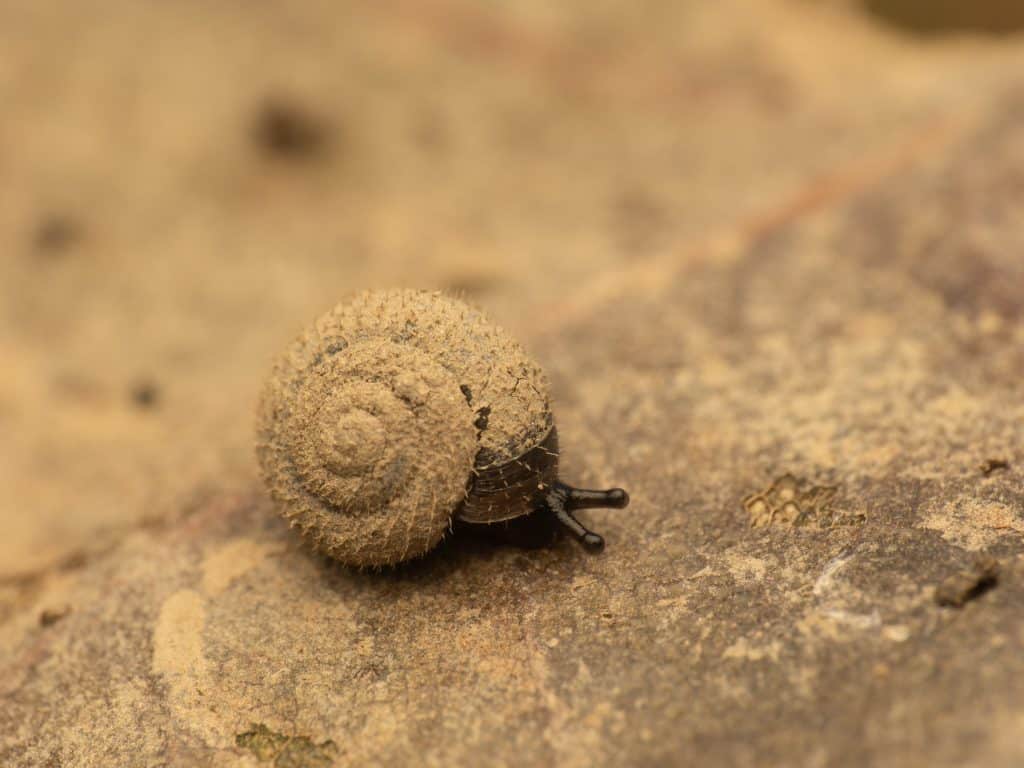This autumn marks the launch of the first-ever pan-London survey for the German hairy snail (Pseudotrichia rubiginosa), a small, little-known land snail that could tell us a lot about the health of the capital’s wetlands and river corridors.
Led by Citizen Zoo and the Zoological Society of London (ZSL), and supported by Greenspace Information for Greater London CIC (GiGL), the London Wildlife Trust, the Port of London Authority, Thames21, and others, the project brings together conservationists, mollusc specialists, and trained citizen scientists to map the species across Greater London.

A species hiding in plain sight
Pseudotrichia rubiginosa is a rare non-marine snail that lives on damp riverside vegetation and wetland margins. Despite its modest size, it has an intriguing history, with scattered records across the Thames and a long track record of being overlooked in biodiversity surveys. The first confirmed London, and national, record came from Syon Park in 1982. Since then, occasional surveys and anecdotal sightings have surfaced, but no coordinated effort has ever been made to understand where the species still survives.

This new survey changes that. Over the coming months, trained volunteers will carry out timed searches across roughly ten sites in Greater London; including historical locations such as Isleworth Ait and the Channelsea River, alongside potential new sites like the Welsh Harp Reservoir in Brent. Records will be photographed and uploaded to iRecord, ensuring the data are accessible, verifiable, and ready to contribute to wider conservation research.
Citizen science in action
Volunteer leaders took part in a training day at Syon Park, fittingly, the site of London’s first P. rubiginosa record in 1982. The session equipped participants with practical skills in snail identification, data recording, and habitat assessment, enabling them to play an active role in this rare urban biodiversity survey. The Conchological Society of Great Britain and Ireland provided invaluable expertise and guidance throughout the day, while Victoria from the GiGL team produced detailed maps of each survey site to support the effort.
Through this collaboration, Londoners will not only help locate an elusive species but also strengthen our collective understanding of how these invertebrates use the city’s blue-green corridors.

The next steps
This data will not only deepen our understanding of how the German hairy snail is faring across Greater London, but will also have national significance. The findings will contribute directly to the Red Listing assessment of the species, led by the Conchological Society of Great Britain and Ireland. We will look to formulate a report which will not only display our findings, but put forward future recommendations and priorities for its protection and recovery. It may also help to identify other associated species that require conservation action too. We hope this report will be available in early 2026.
Small species, big impact
Although Pseudotrichia rubiginosa may not grab headlines like beavers or bats, its story reflects a broader truth about urban ecology, that even the smallest creatures play vital roles in the capital’s ecosystems. By pooling expertise and community effort, this project highlights how data-driven, collaborative conservation can uncover the hidden biodiversity woven through London’s parks, rivers, and wetlands.
